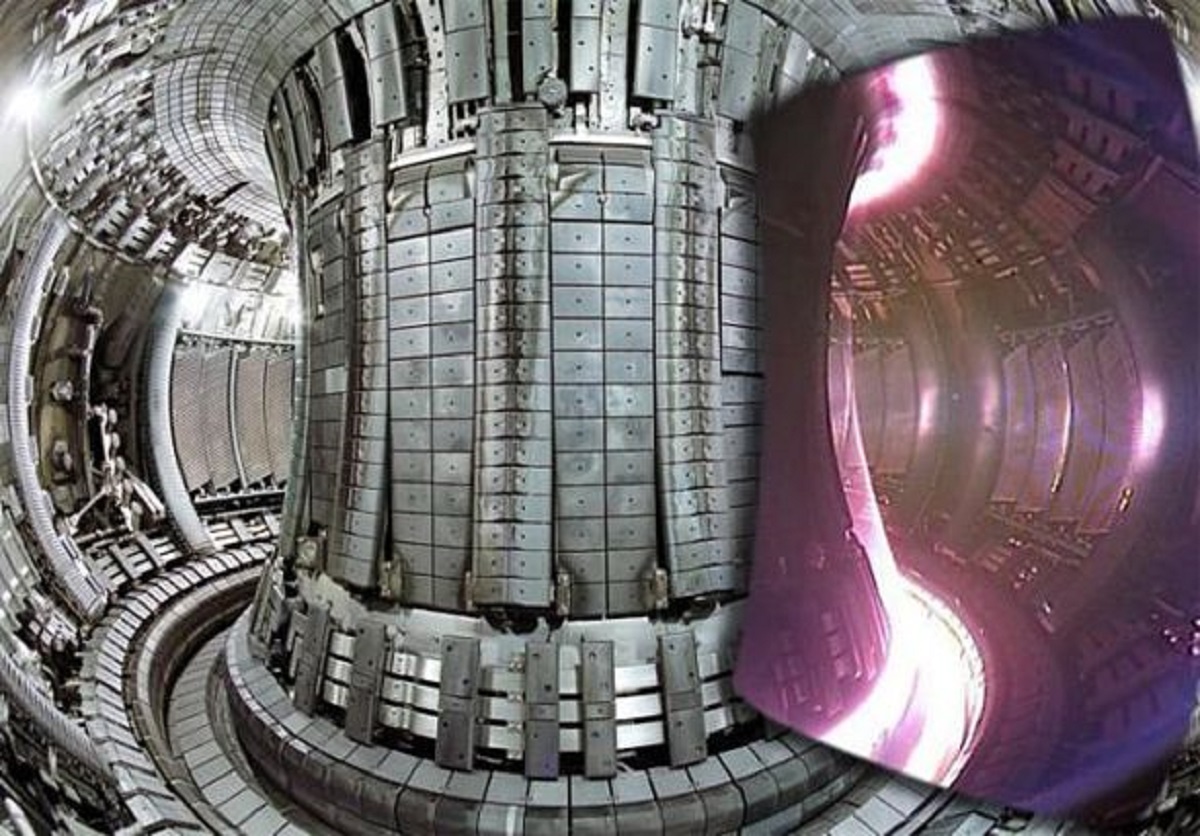
Producing power using nuclear fusion (not fission) is undoubtedly one of the biggest dreams of many scientists. However, the cheap, unlimited source of sustainable electrical power generation has had many tricky and complex challenges. Scientists have solved one of the most challenging ones.
UK scientists are confident they have addressed a critical challenge that prevented nuclear fusion from becoming one of the primary electrical power generation sources. The key was to cool down ‘exhaust gasses’. These superheated fumes attack and damage the internal lining of the nuclear fusion reactor, forcing regular and expensive replacement.
Cooling down exhaust gasses key to protecting the tokamak nuclear fusion reactor:
Nuclear fusion has been possible for quite some time. However, scientists and engineers couldn’t sustain the process for longer periods of time. This was primarily due to the excessive heat involved in the process. After all, the sun uses the exact same technique, and it is pretty hot.
Nuclear fusion offers an environmentally friendly way of producing power. However, it is brutal on the tokamak that holds the reaction.
Check out #MASTUpgrade’s novel exhaust system – the Super-X divertor

It aims to solve one of #fusionenergy’s key challenges – to handle the excess heat from the fusion process without damaging the machine’s surfaces.
Here’s how it will advance fusion research
pic.twitter.com/Vec2tGiSfm
— UK Atomic Energy Authority (@UKAEAofficial) May 26, 2021
When hydrogen isotope atoms collide and fuse together to produce helium, the reaction produces an enormous amount of waste heat. UK scientists have found a way of dealing with these exhaust gases.
Although still quite hot, the scientists managed to cool them from an extraordinary 150million Celsius to just a few hundred degrees. Needless to say, such heat is manageable and more importantly, easy on the tokamak’s internal lining.
How will #MASTUpgrade’s Super-X divertor change the world?
It shows us that components in future fusion power stations could last much longer – improving economic viability and reducing the cost of sustainable electricity.
Watch the video to find out more
pic.twitter.com/sDJBsaUII0
— UK Atomic Energy Authority (@UKAEAofficial) May 26, 2021
The inner lining of the tokamak is made of Tungsten, which has the highest melting point of any metal. However, the exhaust gasses produced during the nuclear fusion reaction damaged the tiles.
The new cooling technique drastically reduces the wear and tear on the tiles. And that means nuclear fusion reactors could soon be viable.
Protect the Tungsten lining of tokamak and produce clean energy for the long term?
Scientists at the UK Atomic Energy Authority (UKAEA) at Culham, Oxfordshire, announced their breakthrough today. They used a £55million experimental fusion reactor called MAST Upgrade.
The key challenge in producing utilities-grade electricity using tokamak has been removing the excess heat produced. The UKAEA team developed a novel exhaust system called the ‘Super-X Divertor’.
"…a new kind of divertor called Super-X, tiled with graphite, shaped like a funnel, with the idea being that the plasma load is spread over a larger area as it exits the tokamak." https://t.co/bnaGqf8nwX
— Leon Bovett (@leonbovett) May 26, 2021
The new method reportedly traps the helium, using a magnetic field, and then diverts it on a longer path. The circuitous route helps the exhaust gasses gradually lose heat and cool down to such a temperature that doesn’t damage the walls.
Nuclear fusion is way more eco-friendly than nuclear fission reactors. Although the latter is far better than burning fossil fuels, it does generate highly toxic radioactive waste.
Nuclear fusion also does not create enormous amounts of greenhouse gases that are common during burning traditional fossil fuels such as coal, gas, and oil to produce electricity.



